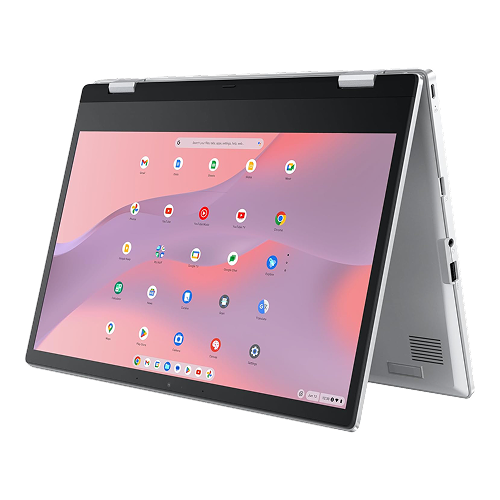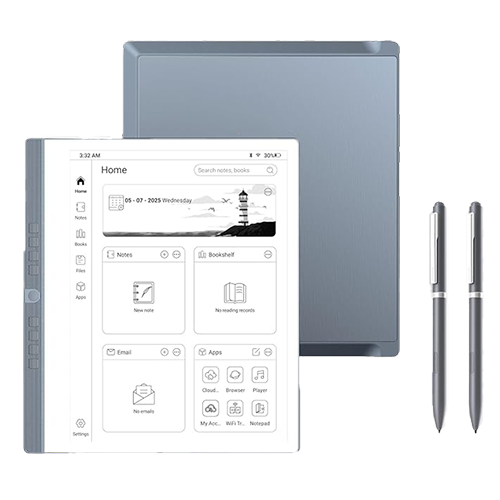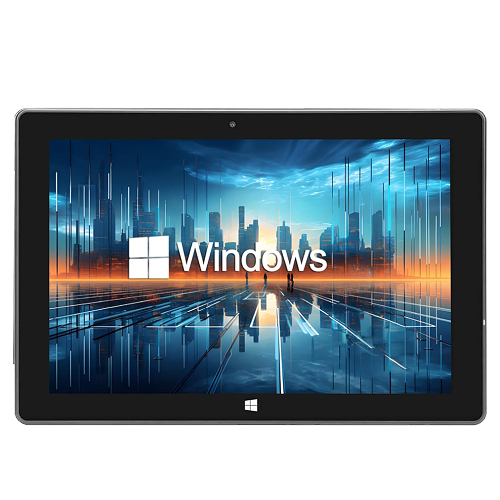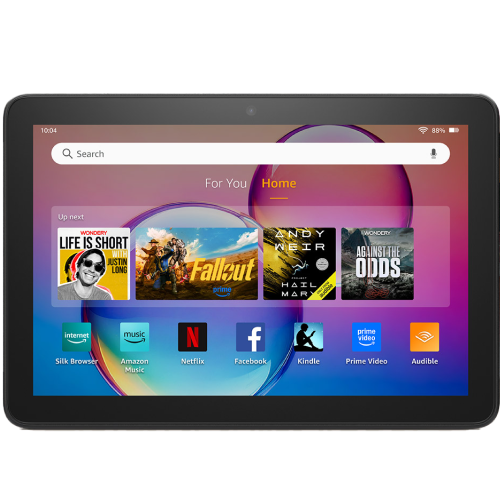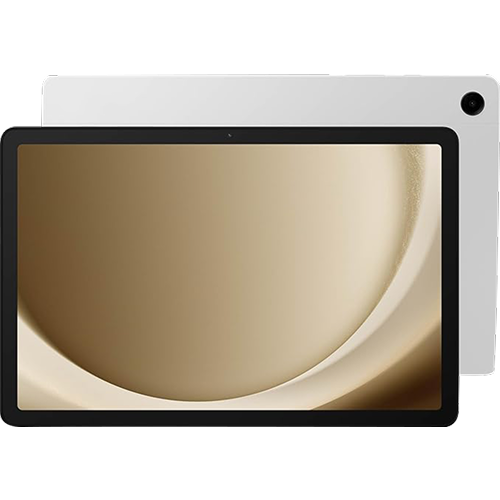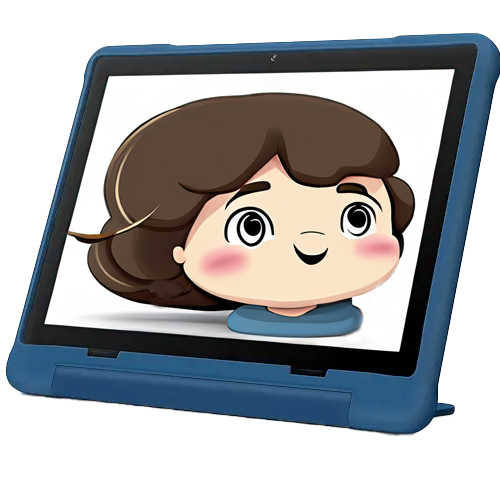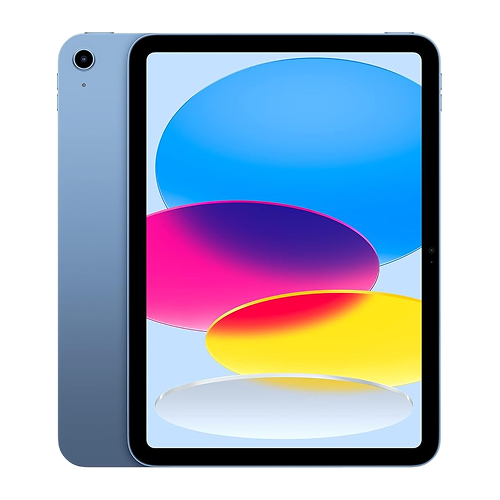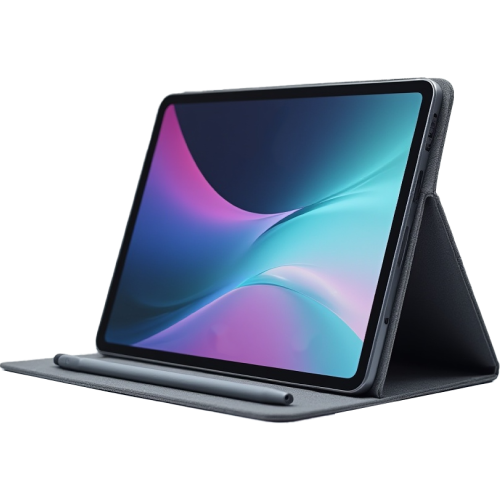Windows tablets merge the portability of a slate with the functionality of a full PC. They run the same Windows operating system found on laptops, giving you full access to desktop programs.
This guide explains what sets them apart, the specs that matter most, and which models are worth buying today.
For more general guidance on Tablets, see our complete Tablet Buyer’s Guide.
Unique Features of Windows Tablets
Windows tablets stand apart from Android and iPad devices by offering a laptop-like experience in a tablet form. The following unique features offer tablet portability without giving up the power and versatility of a PC:
Full Windows OS
The most important is that they use the full Windows operating system, not a mobile adaptation. That means you can install desktop software, manage files through Windows Explorer, and enjoy true multitasking with multiple windows open at once.
2-in-1 Detachables
Most of these devices are built as 2-in-1 detachables, combining a tablet form with a keyboard that attaches magnetically or through a docking connector. This design lets you type and work as though you had a laptop, then remove the keyboard when you want a lightweight tablet. A built-in kickstand is common, adding convenience for video calls, sketching, or watching films.
Laptop-like Internal Hardware
Their internal hardware is closer to laptops than to mobile tablets. Processors come from Intel, AMD, or Qualcomm, often matched with large amounts of RAM and fast solid-state drives.
Connectivity is also laptop-like, with support for USB-C, Thunderbolt, and sometimes optional cellular data. Many models also integrate biometric features such as facial recognition or fingerprint sensors for fast login.
Key Specs & Features Explained
Understanding how to read specifications is key to choosing the right Windows tablet. Some features are vital for everyone, while others add polish or serve specific user groups.
Display Quality and Refresh Rate
The display affects both work and leisure. A Full HD or higher resolution is necessary for sharp text and images. IPS LCD panels provide accurate colors and wide viewing angles, while OLED screens offer deep blacks and vibrant contrast.
High-end devices now feature 120 Hz refresh rates, producing smoother scrolling and more responsive pen interaction. Standard 60 Hz remains common and is fine for typical productivity but less fluid for artists or heavy stylus users.
Processor and Architecture
Performance depends heavily on the processor. Intel Core i5/i7 and AMD Ryzen 5/7 models deliver laptop-level capability, while Qualcomm’s Snapdragon X series brings impressive efficiency and all-day battery life.
Entry-level processors handle browsing, streaming, and light work but may struggle with demanding apps. Architecture matters: x86 chips ensure maximum compatibility with all software; ARM-based chips trade some compatibility for efficiency and longer runtimes.
Memory (RAM)
RAM determines how many tasks you can juggle. 8GB is the starting point for smooth use. 16GB or more is strongly recommended for professionals handling large files or heavy multitasking. 4GB is increasingly insufficient, leading to slowdowns even in light use.
Storage Capacity
Storage affects how much you can keep locally. A 256 GB SSD is the sweet spot for most users, while professionals or creatives may want 512 GB or 1 TB. Many tablets offer microSD slots for expansion, which can ease storage constraints at low cost.
Operating System
These devices run Windows 11 in its standard versions, providing access to the same desktop applications and updates as laptops. Avoid devices limited to Windows 11 in S Mode unless you are comfortable switching out of it for unrestricted use.
Detachable Keyboards
Detachable keyboards define the Windows tablet category. Some models include them, while others sell them separately. They add essential functionality: comfortable typing, integrated trackpads, and protection for the screen when closed.
Stylus Input
Active pens are valuable for students, professionals, and creatives. They allow natural handwriting, sketching, and precise document markup.
Some models bundle the pen, while others require an additional purchase. Performance depends on pressure sensitivity, tilt support, and responsiveness.
Battery Life and Charging
Expect at least eight hours of active use from a good device. Premium ARM-based models sometimes exceed ten or twelve hours.
Heavy workloads like video editing will shorten runtimes, but modern designs generally last through a full workday. USB-C fast-charging is increasingly standard, making top-ups quick and convenient.
Connectivity and Ports
Ports define flexibility. USB-C is universal, with Thunderbolt support on some premium models for faster data and multiple displays.
Headphone jacks, microSD slots, and SIM trays for mobile internet may be included depending on the device. Wireless standards such as Wi-Fi 6E and Bluetooth 5 or higher are important for stable connections and compatibility with modern accessories.
Build and Design
Premium designs use metal for durability and a high-end feel. Plastic-bodied devices save cost and weight but feel less premium. Kickstands, slim bezels, and overall weight determine how portable and comfortable the tablet is to use daily.
Must-Have Features
Certain features are critical to ensure a Windows tablet feels like a capable PC rather than a compromised slate.
- Full Windows 11 OS: This is non-negotiable. Without the full OS, you lose the ability to install desktop software, which is the defining advantage of a Windows tablet. It ensures compatibility with Office, Adobe apps, and even specialized tools.
- Strong Processor: The CPU drives the experience. For professionals, aim for Intel Core i5/i7, AMD Ryzen 5/7, or Qualcomm Snapdragon X Elite. These handle multitasking, heavy software, and ensure longevity. Casual users can get by with mid-tier chips, but avoid the weakest processors, as they struggle under load and shorten the usable lifespan of the device.
- Adequate RAM: 8 GB is the minimum for comfortable Windows use. 16 GB is ideal for multitaskers, designers, and professionals. Devices with only 4 GB are best avoided, as they cannot handle modern workloads smoothly.
- Quality Display: A clear, high-resolution panel is vital for reading, writing, and media. Full HD IPS is the baseline, with OLED offering the best colors and contrast. Low-resolution panels degrade the experience and should be avoided.
- Long Battery Life: A tablet should last a full day away from the charger. At least eight hours of mixed use is essential, and ten or more is preferable for professionals who travel. Poor battery life undermines portability, the core advantage of the category.
- Keyboard Support: Productivity hinges on typing. A compatible keyboard, ideally included or available separately, transforms the tablet into a laptop replacement. Even casual users benefit from having one for writing emails or working on documents.
Nice-to-Have Features
Other features may not be essential for everyone, but they enrich the experience and add long-term value.
- 120 Hz Display: The extra smoothness is particularly valuable for creatives using a pen, making drawing and writing feel more natural. Gamers and those sensitive to fluidity also benefit, though casual users may find 60 Hz perfectly adequate.
- Bundled Stylus: Having the pen included saves money and ensures immediate access to digital inking. While you can buy one later, bundled pens represent convenience and value.
- Expandable Storage: A microSD slot is a lifesaver for those with large libraries of photos, videos, or project files. It is inexpensive and avoids the need to pay for higher-capacity internal storage.
- Premium Build: Metal designs feel luxurious and endure better over time. They also help with cooling. Plastic builds can suffice but may feel less sturdy.
- Advanced Connectivity: Thunderbolt ports expand possibilities, supporting fast drives, multiple monitors, or even external graphics cards. Cellular modems provide internet everywhere, invaluable for business travelers.
- Superior Audio and Cameras: Good speakers and webcams enhance media and video calls. They matter most for those who watch films or attend frequent virtual meetings. For others, average components are enough.
- Extra RAM and Storage Options: While not essential, higher-spec models with 16+ GB RAM and 512 GB or 1 TB storage offer future-proofing. Creatives and professionals who handle large files may find this particularly useful.
Recommended Models
Flagship All-Rounder – Microsoft Surface Pro 11 (2024) – $$$
This 13-inch flagship combines performance and portability. It uses Qualcomm’s Snapdragon X Elite chip, delivering both speed and impressive efficiency.
The bright high-resolution screen is available with an OLED option, and battery life often exceeds a full workday. The magnesium body feels premium, and the kickstand allows flexible angles. Keyboards and pens are sold separately, so budget accordingly.
Professional Workhorse – Lenovo ThinkPad X12 Detachable Gen 2 – $$$
Aimed at business professionals, this 12.3-inch tablet comes with Intel’s Core Ultra processors and supports up to 32 GB of RAM.
The build quality is rugged and enterprise-ready, with a folio keyboard included. Security features such as fingerprint and face recognition are built in, and multiple USB-C ports provide good connectivity. The display is a sharp Full HD+ IPS panel suitable for office use.
Creative Powerhouse – Lenovo ThinkPad X13 2-in-1 Gen 5 (2024) – $$$
While the above ThinkPad X12 Detachable Gen 2 is built as a lightweight tablet-first device with a folio keyboard, the ThinkPad X13 2-in-1 Gen 5 is a sturdier convertible laptop-tablet hybrid designed for heavier creative and professional workloads.
It delivers workstation power in a convertible form for those who need performance and flexibility. Its Intel Core Ultra processors, paired with up to 32 GB of RAM and 1 TB of SSD storage, provide the speed and multitasking headroom required for demanding creative tasks such as digital art, large-format photo editing, and complex design projects.
The 13.3-inch IPS touchscreen offers a clear, color-accurate workspace with a productivity-friendly 16:10 aspect ratio. As a convertible 2-in-1, it supports touch and pen input while retaining the durability and typing experience of Lenovo’s ThinkPad keyboard.
Connectivity is robust, with Thunderbolt 4 ports, Wi-Fi 7, Bluetooth 5.4, and enterprise-grade security features. The build quality matches Lenovo’s reputation for rugged yet refined professional devices.
Budget-Friendly 2-in-1 – Microsoft Surface Go 4 (2023) – $
This 10.5-inch tablet is the affordable entry point to the Surface line. With an Intel N200 processor and 8 GB RAM, it handles browsing, streaming, and Office tasks reliably. Battery life reaches eight to ten hours.
It includes a microSD slot and headphone jack, features often missing on pricier models. The compact size and low weight make it very portable. The keyboard and pen are optional extras.


